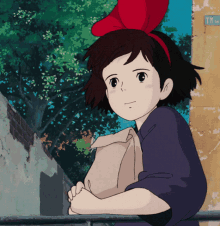On November 30th, 2022, a supernova exploded in the digital sky, immediately capturing the eyes of the entire world. This phenomenon was none other than the release of ChatGPT (Chat Generative Pre-trained Transformer) by OpenAI. In just five days, the number of registered users exceeded over 1 million, and on March 2024, data indicated that ChatGPT had obtained over 180.5 million users. OpenAI's chief, Sam Altman, claimed that ChatGPT attracted 100 million users weekly.
Ever since its release, the world has been amazed by ChatGPT's ability to generate human-like content through prompts. But exactly how does it work? This is the question that everyone has on their mind.

Image Credit: Jonathan Kemper from Unsplash
How does ChatGPT work?
ChatGPT generates text based on a large language model (LLM). OpenAI explained that LLM is a type of deep learning model trained on vast amounts of text data from the internet. One way to think about it is that ChatGPT is initially like a newborn baby without prior knowledge.
Instead of learning how to "speak" from its parents, it has quickly learned from all the text and information on the internet since 1983. To be more specific, it was trained on how to converse based on the vast amounts of text from various domains at a speed that scales beyond human capabilities. It has a neural network in its brain, which is called a Transformer, that handles sequential data like text. When ChatGPT is fed with a sentence, the Transformer uses self-attention mechanisms to weigh the importance of different words to effectively capture dependencies across long sequences. As the training proceeds, the model learns the statistical patterns and structures of natural language across the various domains.
After training, ChatGPT became an advanced Natural Language Processing (NLP) model like no other. When asked a question, it uses the words in the prompt to predict the next word or sequence that logically follows based on its learned patterns. The model then computes a probability distribution over the learned vocabulary to predict the most likely next word based on the conversation context.
High-probability words are more likely to be chosen. This process continues iteratively, with each generated word influencing the next, resulting in a coherent response to the initial prompt.
Does ChatGPT understand what it is generating? Not necessarily. It just outputs a sequence of words based on probability.
It is not ChatGPT that renders a meaningful response. It is meaningful only because we interpret the sequence based on our knowledge and understanding of languages. In other words, ChatGPT operates primarily at the syntax level of language processing, generating text that follows grammatical rules and stylistic conventions. At the same time, human communication focuses on the semantic level, involving a richer comprehension of deeper layers of language, including context, emotions, culture, and the intended meaning behind words.

Image Credit: Aaron Burden from Unsplash
Why do writers mimic ChatGPT?
As ChatGPT gets increasingly popular, writers are continuously exposed to AI-generated content. Some writers may use ChatGPT to create initial drafts of essays, brainstorm new ideas, collect supportive materials, and more. Eventually, AI-generated content can subconsciously influence people's writing styles.
Furthermore, as more writings adopt ChatGPT's language usage, other writers may adapt their style to cater to supposedly "good writing trends."It has been noticed that AI-generated content has certain writing styles. The study in [1] found that ChatGPT-4 normally generates paragraphs in 2 to 4 sentences, each including 16 to 20 words. It normally starts with an overview sentence and concludes with a simple present-tense summary. It mainly uses active voice, the declarative mood in academic writing, and interrogative mood in case study-related responses [1].
Recent research has shown that ChatGPT has impacted the academic writing style. Geng and Trotta's research [2], published in April 2024, collected arXiv papers provided by Kaggle and compared word frequencies from one million arXiv article abstracts submitted from May 2018 to January 2024. The analysis showed that the frequency of some words changed dramatically after the deployment of ChatGPT.
The paper clarified that ChatGPT style doesn't necessarily mean the authors copied text from ChatGPT directly or modified based on it. It could instead mean that their writing habits, such as vocabulary, tone, and sentence structures, were influenced by ChatGPT [2]. Non-English speakers might especially intend to follow ChatGPT's language, considering ChatGPT is trained from the publications of English speakers.
While many factors influence writers to adopt a writing style similar to ChatGPT, it is important to approach this trend cautiously. ChatGPT learned human language and generated its own human-like text, and now writers are adapting phrases and expressions commonly found in AI-generated text, potentially becoming more like ChatGPT. We must realize that AI-generated text often strictly follows grammatical norms and common patterns learned from large data sets.
Although AI-generated writing is sophisticated to a certain extent, it lacks the inherent understanding of individual human experiences, emotions, cultural nuances, ethical considerations, and more. It would be ironic if we lost our individuality and became homogeneous to ChatGPT. It is essential to preserve our uniqueness and creativity as writers.

Image Credit: Elena Mozhvilo from Unsplash
Balancing ChatGPT Use with Writer Individuality
Before the computer was invented, people wrote things by hand, whether they were scholarly articles, stories, essays, or other things. From just the handwriting, people can tell who wrote it. Essentially, each individual's handwriting was a unique part of their identity. After all, others can detect the personality and characteristics of the author just from the handwriting.
As computer usage became popular with the growing modern age, the need for handwriting became much less. Now, people have less chance to know someone from their handwriting but can still discern the author's identity from the content typed on a computer. However, as more articles adapt to the ChatGPT writing style, it's important to maintain our individuality.
Writing is a way to express yourself freely as a genuine person. If you get stuck, ChatGPT can be a great writing assistant. ChatGPT can be helpful by checking grammar and offering a larger vocabulary range.
It can also help provide ideas, broaden perspectives, and spark creativity. However, remember that the best way to use it is to stimulate your creativity rather than hinder it.
Conclusion
AI, such as ChatGPT, is becoming more prevalent in the modern age. However, it is important to remember that we must balance its benefits with our individuality. While ChatGPT can generate human-like text and follow grammatical norms, it does not account for the diversity of human experiences or various cultures.
It may have much broader knowledge and information than each of us. However, ChatGPT does not have a mind of its own, and it doesn't have the emotions and rich experiences that we have. After all, it generates content solely based on facts, statistics, and information from pre-prepared datasets. Because of that, there are certain words that it might often repeat and certain patterns that it always reuses. As ChatGPT isn't a human itself, it does not have the strength to touch the bottom of a human's heart and generate real emotions, as a true writer's word may. Thus, it is of the utmost importance that writers remember to have their writing reflect their voices, unique opinions, and genuine feelings. Doing so allows us to maintain a colorful and diverse world full of deep and interesting thoughts and rich emotions.
References
[1] Mohammad Awad AlAfnan and Siti Fatimah MohdZuki, Do Artificial Intelligence Chatbots Have a Writing Style? An Investigation into the Stylistic Features of ChatGPT-4, Journal of Artificial Intelligence and Technology, 2023, 3, 85-94 https://doi.org/10.37965/jait.2023.0267
[2] Mingmeng Geng, Roberto Trotta, Is ChatGPT Transforming Academics' Writing Style? https://doi.org/10.48550/arXiv.2404.08627










.jpg)



